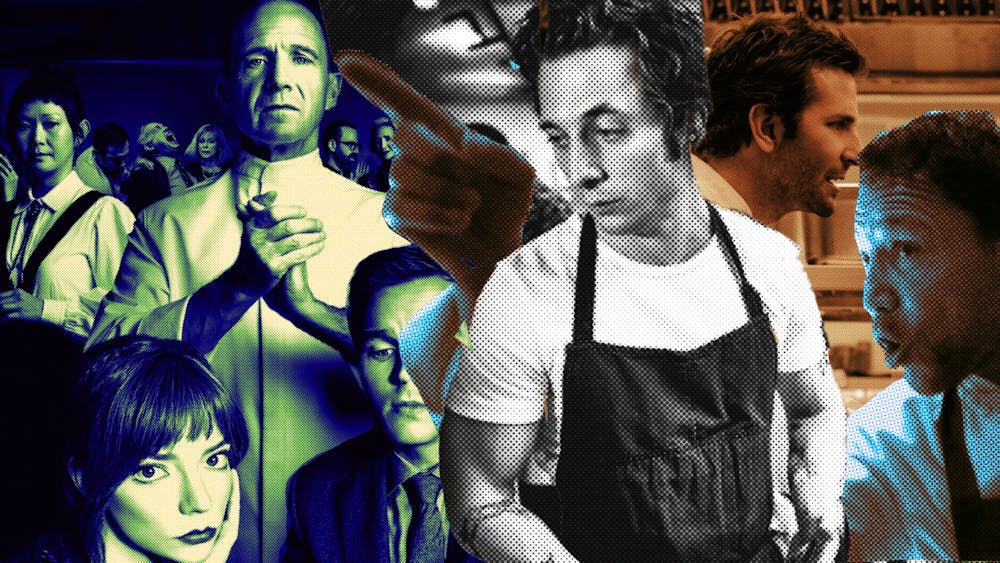Why are filmmakers so obsessed with food? The past few years have seen a dramatic rise in the popularity of movies and TV shows set in the kitchen: The Bear, The Menu, Burnt, Boiling Point and The Taste of Things are just some examples. Why has this niche genre exploded? In this article, I will answer that very question and present my Grand Unified Theory of Food Film, a five–part theory as to why the Food Film has become so popular.
Before we start, I think it’s important to define the Food Film. For this exercise, I am only considering movies and TV shows that are both about the process of making food and largely set in a kitchen. The Bear? That counts. The majority of episodes of the show take place mostly inside the restaurant and even those that don’t are about the process of making food. What about something like Phantom Thread, a film where food plays a large role in the plot? No, Phantom Thread, though a masterpiece, does not qualify as a food film as it is not about the making of food. Neither does something like Pig, a film very much about the restaurant scene but one that does not take place in the kitchen. While Pig is a movie about food, it’s not a Food Film.
Now, with definitions out of the way, it’s time for the theory. Part one is quite simple: Food looks good on screen. At its most fundamental level, film as a medium is about making enticing images, and there are few images that look better than a world renowned chef cooking delicious food. It creates a base level response in the viewer. The advantage of setting a film or TV show in a kitchen is that images of food being cooked can be woven into the act of storytelling, like extended shots of a sizzling pan or a boiling pot between sequences of action and dialogue. These shots don’t even have to be particularly complex or expensive.
This leads to the second part of my theory: Movies and TV shows set in the kitchen are cheap to film. As CGI continuously increases production budgets, shooting a chef cooking a steak is an inexpensive way to gain easy production value. All the aforementioned food projects have budgets below $30 million dollars, which, in the film world, qualifies them as small. Why pay an exorbitant amount of money to film a battle scene or animate a spaceship when you can simply put one person next to a pan and just let him cook? Every executive in Hollywood understands that the key to making money in today’s world is to keep budgets low—the food film is one of the easiest ways to do that.
Part three of the theory answers the question of "why now?" For food related projects, you only need one key location. This is particularly notable as a lot of these projects were shot during the COVID–19 pandemic, when productions needed to be as contained as possible. Inevitably, this led to a ton of boring lockdown dramas in an apartment. However, executives also realized that studios could set most, if not all, of a film or TV show in a high intensity kitchen. That’s significantly more interesting and just as cost effective, and it’s not a coincidence that this genre exploded during and directly following the pandemic.
Part four of my theory goes as follows: Kitchens are great sources of drama. Any high–intensity job will create space for conflicts and thrills, but the fact that the kitchen is a confined space where the heat literally gets turned up makes it the perfect metaphor for any dramatic narrative. Want to tell a story about work–life balance? The kitchen has you covered. How about a critique of aristocratic art culture? The kitchen works for that too. Or a romance of two people bonded over their shared love of an art form? The kitchen is the place to tell any kind of story that you want, and therefore, food film can encompass any genre. The Menu, for example, takes more of a horror approach while The Taste of Things is a romantic drama. The kitchen is a canvas for any kind of filmmaker to paint on.
And the reason for that? Well, that’s part five: The chef is the perfect stand–in for the artist. Do you know who likes to make art about themselves? Artists do. They can’t help it. The issue, however, is that watching art on screen is oftentimes incredibly boring. Watching someone draw isn’t as interesting as seeing the final product. Likewise with the filmmaking process. No one wants to see how the sausage gets made and watch a director painstakingly tinker with camera angles until they find the right one. Watching a chef cook, however, is interesting. It’s action–packed and unpredictable, high stakes and relatable at the same time. Everyone, to some degree, can cook. And when you’re watching a world class chef on screen, there's a sense of attainability that's absent when you’re watching a master painter. Filmmakers love portraying the struggling artist on screen because it’s something they relate to. Viewers, at the same time, like watching chefs on screen because they’re relatable as well. The chef, thus, is the perfect on–screen artist.
And there you have it. The Grand Unified Theory Of Food Films. Was this all a waste of time? Probably. Did I watch too many movies about food to prepare for this article instead of studying for my midterms? Of course. But now the next time you watch a film or TV show set largely in a kitchen you’ll be able to turn to your friends and loved ones and explain to them why there are so many movies and TV shows like this. And they’ll probably look at you like you’re crazy.







